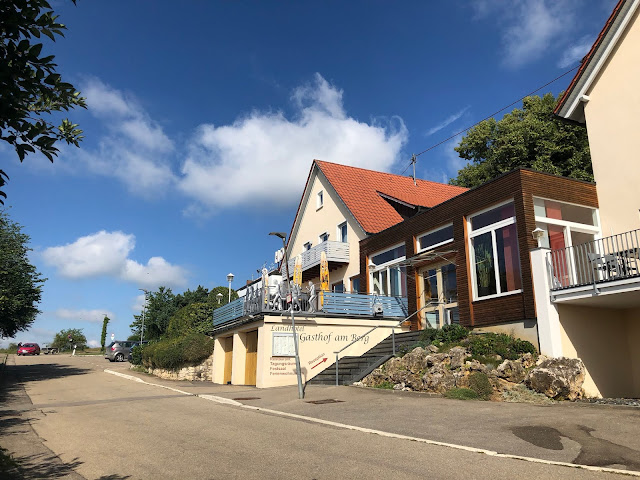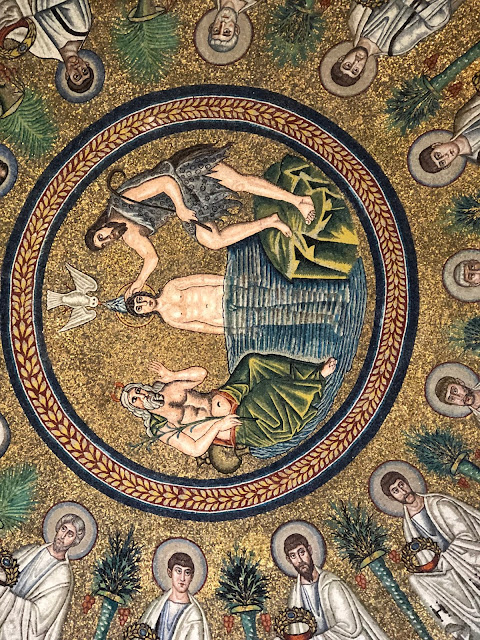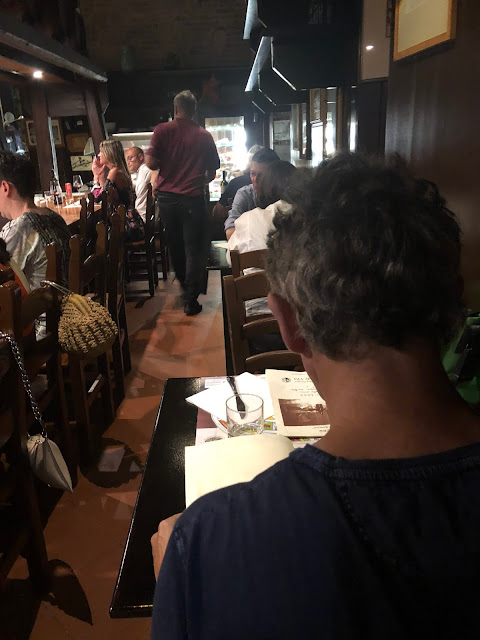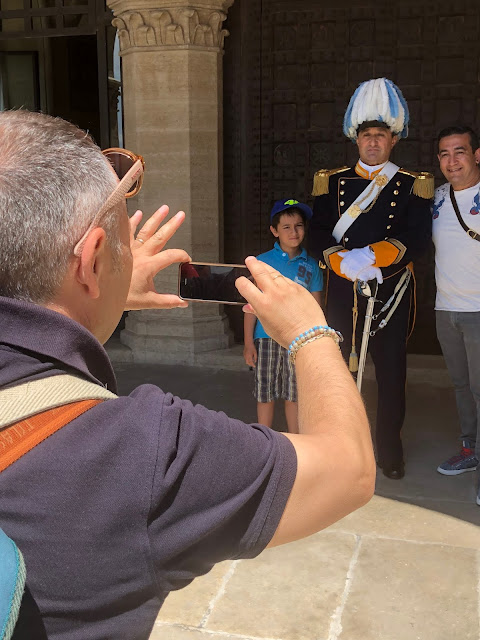This time the route was from Ravenna to Alto Adige, through Austria and Germany.
Stop at Elena Walch (fav wine) shop at Alto Adige for 'lunch' and to buy wines. We loved it. Great idea to have a stopover here 👍
Austria
arriving at our home for this evening in Germany at Gasthof am Berg
German dinner (schnitzels with frites & a beer) at the hotel, where we joined a bus load of old girls and guys, who stayed at the hotel too.
in front of the hotel: wrapped in green
***
Saturday, 23 June 2018: more travelling
After a good night sleep, we explored a bit of the surrounding of the hotel, which is situated on a 'berg' (hill) and on one of the many tracks that lead to Santiago de Compostela.
When we wanted to take a shower last evening we saw a notecard that informed hotel guests the shower shouldn't be used after 22 hrs. Arghh, of course we did take a shower, but mmm this is a place for old people and early rising hikers for sure. The surroundings are beautiful though, very quiet and in the middle of nature, AND you don't notice the A8, which is close. A good overnight stay when travelling.
crispy morning, lovely view and sunshine
photo made from inside the car: the front screen is dirty
brrrr too cold for a nice lunch stop
when arriving home we received this cool gift from unknown sender(s).....
It was a super trip, loved this holiday. Wished it would never end.


























































